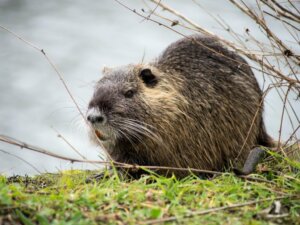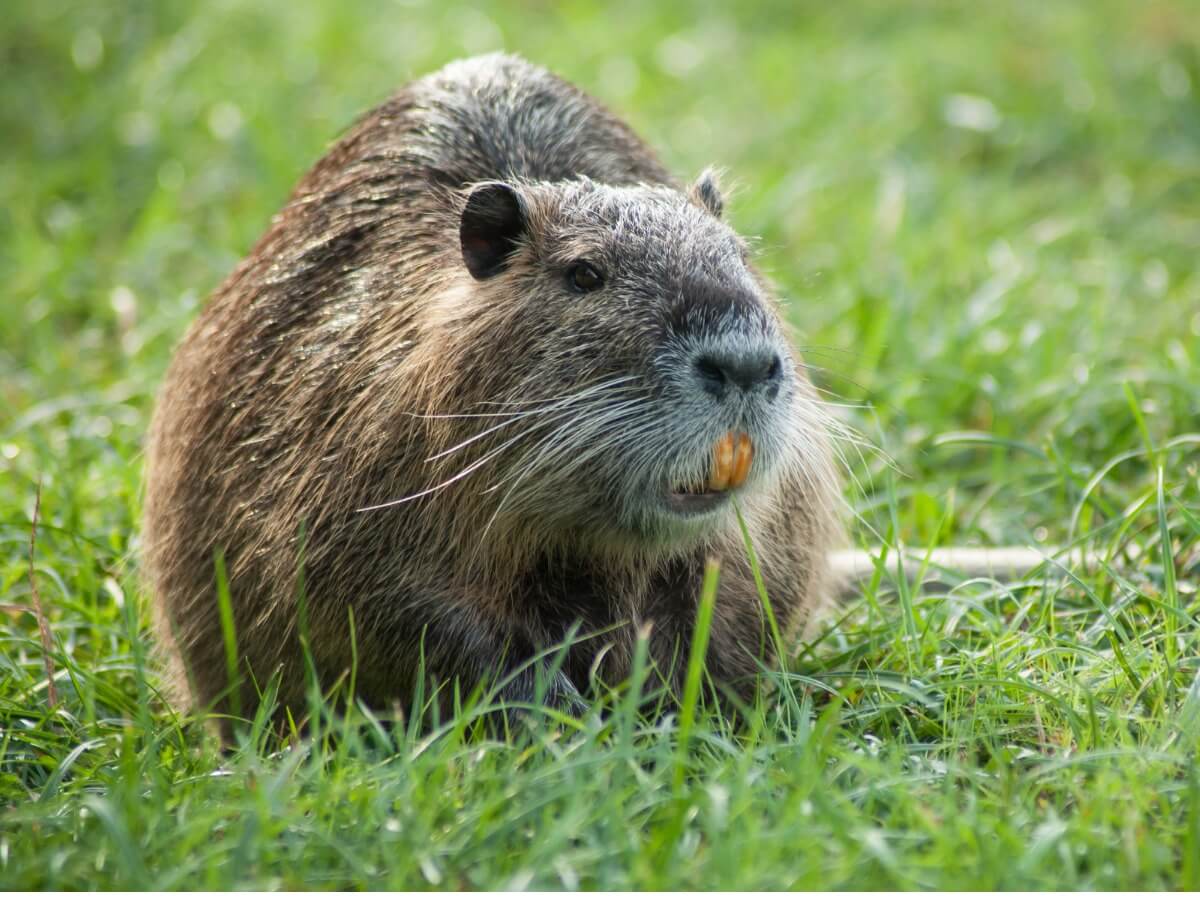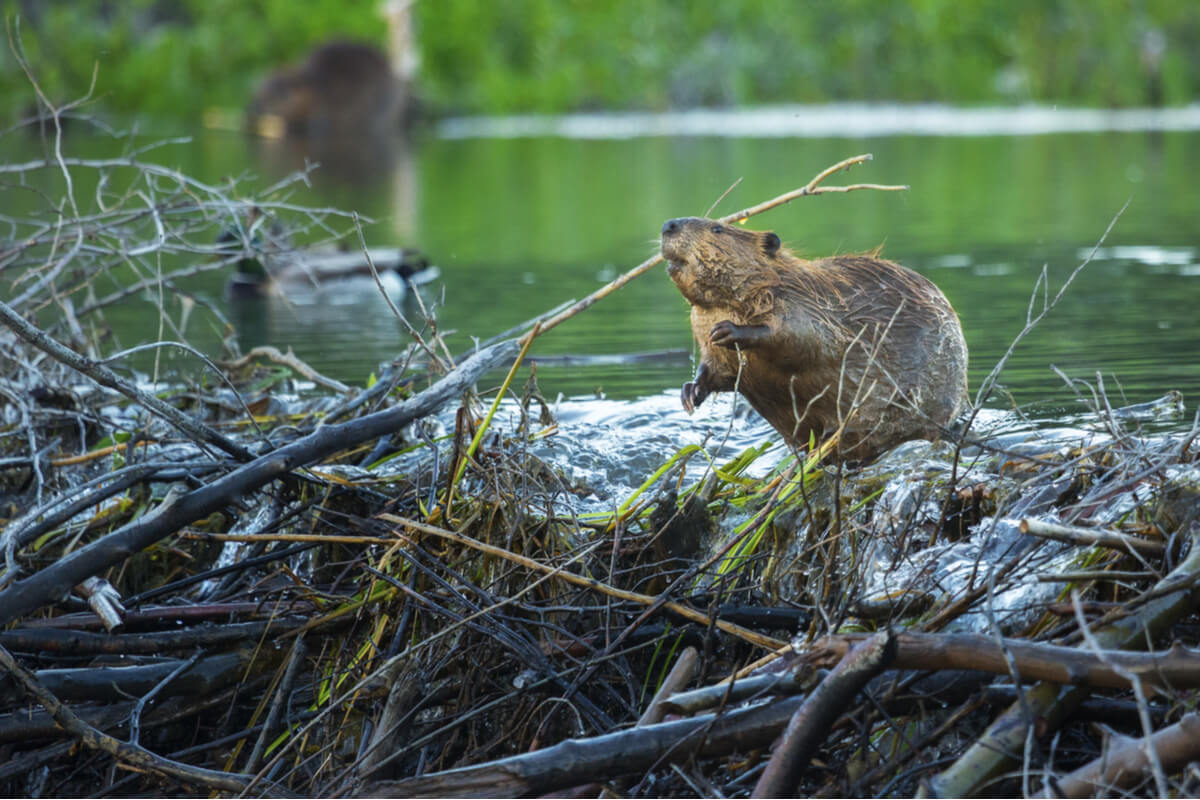5 Differences Between Beavers and Coypus


Reviewed and approved by the biologist Samuel Sanchez
Beavers (genus Castor) and coypus (Myocastor coypus) are both semi-aquatic animals with a similar appearance, but there are amazing and interesting differences between beavers and coypus that we’d like to tell you about. As much as they look outwardly alike, they have different physical characteristics and behavior.
In North America, both rodents are some of the most enjoyable wild animals to watch, but they are sometimes difficult to tell apart. Either because you have access to them or because you simply want to know what distinguishes them, here you can learn 5 of their key differences.
Differences between beavers and coypus
To differentiate both animals it’s important to first look at their tail. According to Cool Green Science, it’s the key to telling the difference between them. You should also look at the general shape of their body, their fur, and their behavior; observe what they have in their mouth, if they’re hunting, if they’re feeding on plants or carrying branches.
1. Their origin and current location
The coypu is native to the southern parts of South America. This species has been captured in hatcheries around the world to commercialize its skin and meat, but some specimens have managed to escape and colonize wetlands with great success – especially in places where the winter isn’t very strong, affecting the ecosystems.
For this reason, they can be found, apart from in South America, in North America and much of Western Europe; something that they have in common with beavers. For their part, beavers, native to North America, Europe, and Asia, continue to live in their original habitat.

2. Their tail, one of the main differences between beavers and coypus
Beavers’ tails are large, horizontally flattened, almost hairless, and paddle-shaped – unmistakable. It can measure from 25 to 33 centimeters (10 to 13 inches) long and 7cm to 20cm wide (3 to 8 inches). According to the South Carolina College of Agriculture, Forestry and Life Sciences, when something bothers them, these animals hit their tails on the surface of the water.
In coypus, on the other hand, the tail is round, pointed and with little hair. It can measure from 13 to 16 inches, according to the US Fish and Wildlife Service.
3. Its size and speed
The coypu (Myocastor coypus) is much smaller than the beaver (Castor canadensis), as indicated by the Oregon Environmental Services. In contrast, they’re more agile and are faster swimmers, while the beaver’s swim is much slower.
It’s difficult to see the size of beavers when they just stick their head out of the water, but they’re very large and have a rounded appearance when on land.
For their part, beavers can measure between 1 meter and 1.20 meters (3.3 – 4 feet) and weigh between 15 to 22 kilos or more (33-48 lbs). Meanwhile, coypus can weigh up to 9 kilos (19 lbs) and mature adults are around 60 centimeters (24 inches).
4. Its fur, legs and teeth
A beavers’ fur consists of 2 layers: a thick outer coat of protective hair – often brown to reddish in color – and a thin, dense coat, which lies underneath the first. Each of its legs has 5 digits and the hind limbs have membranes, while the front ones don’t.
Coypus have dense, grayish fur, covered by long, shiny guard hairs, ranging from dark brown to yellowish-brown in color.
The muzzle of a coypu is covered in rough white fur, and their hind legs are much longer than their front legs — giving them a hunched-over appearance when on the ground. These are webbed, while their front legs have 4 well-developed toes, with claws and a vestigial toe. Like beavers, their incisors are large and yellowish in color.
5. Their constructions: another of the differences between beavers and coypus
Both create different types of constructions in the water, because the two rodent mammals are excellent swimmers. The difference is that beavers live in these creations, but coypus don’t, as they only use them for food and grooming.
If you see felled trees without branches or bark in a territory where there may be beavers, this is likely to be their doing. Beavers prefer certain species of trees and shrubs to build their prey, such as poplars, willows, conifers, fruit trees, and ornamentals.
These rodents often surround trees and shrubs around ponds and build wooden and mud dams, which is why they’re often seen carrying branches or sticks. They also create slides or slippery paths, where they enter and exit the water.
The coypu, on the other hand, builds floating platforms made of aquatic vegetation, which can measure up to 90 centimeters (35 inches). To shelter and rest, they dig burrows the size of a volleyball at the water’s edge.
Adaptations
These two rodents have several adaptations to a semi-aquatic life beyond their webbed feet. For example, the coypu’s eyes, ears, and nostrils are high on their head.
Their nostrils and mouth have valves that seal the water when swimming, diving, or feeding underwater. This adaptation also happens with beavers, adding their transparent ocular membranes.

Despite the fact that they both inhabit the aquatic ecosystem, coypus and beavers are totally different mammals. Their adaptations, diet, and habits show that these animals have a lot in common, but also clearly different traits.
Beavers (genus Castor) and coypus (Myocastor coypus) are both semi-aquatic animals with a similar appearance, but there are amazing and interesting differences between beavers and coypus that we’d like to tell you about. As much as they look outwardly alike, they have different physical characteristics and behavior.
In North America, both rodents are some of the most enjoyable wild animals to watch, but they are sometimes difficult to tell apart. Either because you have access to them or because you simply want to know what distinguishes them, here you can learn 5 of their key differences.
Differences between beavers and coypus
To differentiate both animals it’s important to first look at their tail. According to Cool Green Science, it’s the key to telling the difference between them. You should also look at the general shape of their body, their fur, and their behavior; observe what they have in their mouth, if they’re hunting, if they’re feeding on plants or carrying branches.
1. Their origin and current location
The coypu is native to the southern parts of South America. This species has been captured in hatcheries around the world to commercialize its skin and meat, but some specimens have managed to escape and colonize wetlands with great success – especially in places where the winter isn’t very strong, affecting the ecosystems.
For this reason, they can be found, apart from in South America, in North America and much of Western Europe; something that they have in common with beavers. For their part, beavers, native to North America, Europe, and Asia, continue to live in their original habitat.

2. Their tail, one of the main differences between beavers and coypus
Beavers’ tails are large, horizontally flattened, almost hairless, and paddle-shaped – unmistakable. It can measure from 25 to 33 centimeters (10 to 13 inches) long and 7cm to 20cm wide (3 to 8 inches). According to the South Carolina College of Agriculture, Forestry and Life Sciences, when something bothers them, these animals hit their tails on the surface of the water.
In coypus, on the other hand, the tail is round, pointed and with little hair. It can measure from 13 to 16 inches, according to the US Fish and Wildlife Service.
3. Its size and speed
The coypu (Myocastor coypus) is much smaller than the beaver (Castor canadensis), as indicated by the Oregon Environmental Services. In contrast, they’re more agile and are faster swimmers, while the beaver’s swim is much slower.
It’s difficult to see the size of beavers when they just stick their head out of the water, but they’re very large and have a rounded appearance when on land.
For their part, beavers can measure between 1 meter and 1.20 meters (3.3 – 4 feet) and weigh between 15 to 22 kilos or more (33-48 lbs). Meanwhile, coypus can weigh up to 9 kilos (19 lbs) and mature adults are around 60 centimeters (24 inches).
4. Its fur, legs and teeth
A beavers’ fur consists of 2 layers: a thick outer coat of protective hair – often brown to reddish in color – and a thin, dense coat, which lies underneath the first. Each of its legs has 5 digits and the hind limbs have membranes, while the front ones don’t.
Coypus have dense, grayish fur, covered by long, shiny guard hairs, ranging from dark brown to yellowish-brown in color.
The muzzle of a coypu is covered in rough white fur, and their hind legs are much longer than their front legs — giving them a hunched-over appearance when on the ground. These are webbed, while their front legs have 4 well-developed toes, with claws and a vestigial toe. Like beavers, their incisors are large and yellowish in color.
5. Their constructions: another of the differences between beavers and coypus
Both create different types of constructions in the water, because the two rodent mammals are excellent swimmers. The difference is that beavers live in these creations, but coypus don’t, as they only use them for food and grooming.
If you see felled trees without branches or bark in a territory where there may be beavers, this is likely to be their doing. Beavers prefer certain species of trees and shrubs to build their prey, such as poplars, willows, conifers, fruit trees, and ornamentals.
These rodents often surround trees and shrubs around ponds and build wooden and mud dams, which is why they’re often seen carrying branches or sticks. They also create slides or slippery paths, where they enter and exit the water.
The coypu, on the other hand, builds floating platforms made of aquatic vegetation, which can measure up to 90 centimeters (35 inches). To shelter and rest, they dig burrows the size of a volleyball at the water’s edge.
Adaptations
These two rodents have several adaptations to a semi-aquatic life beyond their webbed feet. For example, the coypu’s eyes, ears, and nostrils are high on their head.
Their nostrils and mouth have valves that seal the water when swimming, diving, or feeding underwater. This adaptation also happens with beavers, adding their transparent ocular membranes.

Despite the fact that they both inhabit the aquatic ecosystem, coypus and beavers are totally different mammals. Their adaptations, diet, and habits show that these animals have a lot in common, but also clearly different traits.
All cited sources were thoroughly reviewed by our team to ensure their quality, reliability, currency, and validity. The bibliography of this article was considered reliable and of academic or scientific accuracy.
Clemson Extension. (2020, 16 noviembre). Beavers, Muskrats and Otters | College of Agriculture, Forestry and Life Sciences | Clemson University, South Carolina. https://www.clemson.edu/extension/water/stormwater-ponds/problem-solving/nuisance-wildlife/beavers-muskrats/index.html
Hausheer, J. E. (2021, 29 abril). Beaver? Otter? Muskrat? A Field Guide to Freshwater Mammals. Cool Green Science. https://blog.nature.org/science/2021/04/12/beaver-otter-muskrat-a-field-guide-to-freshwater-mammals/
The City of Portland Oregon. (2020, 30 marzo). Beaver, Muskrat and Nutria Identification. https://www.portlandoregon.gov/bes/article/348260
Wikipedia. (s. f.). Myocastor coypus. Recuperado 13 de mayo de 2021, de https://es.wikipedia.org/wiki/Myocastor_coypus
This text is provided for informational purposes only and does not replace consultation with a professional. If in doubt, consult your specialist.








